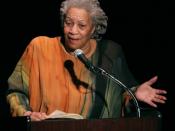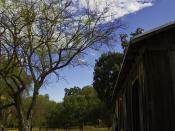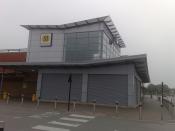Post World War I, many new opportunities were given to the growing and expanding group of African Americans living in the North. Almost 500,000 African Americans moved to the northern states between 1910 and 1920. This was the beginning of a continuing migration northward. More than 1,500,000 blacks went north in the 1930's and 2,500,000 in the 1940's. Life in the North was very hard for African Americans. Race riots, limited housing resulting in slum housing, and restricted job opportunities were only a few of the many hardships that the African American people had to face at this time. Families often had to separate, social agencies were overcrowded with people that all needed help, crime rates increased and many other resulting problems ensued. The Bluest Eye by Toni Morrison takes place during this time period. A main theme in this novel is the quest for individual identity and the influences of the family and community in that quest.
This theme is present throughout the novel and evident in many of the characters. Pecola Breedlove, Cholly Breedlove, and Pauline Breedlove are all embodiments of this quest for identity, as well as symbols of the quest of many of the Black northern newcomers of that time.
The Breedlove family is a group of people merely under the same roof, a family only by name. Cholly (the father) is a constantly drunk and abusive man. His abusive manner is apparent towards his wife Pauline physically and towards his daughter Pecola sexually. Pauline is a "mammy" to a white family and continues to favor them over her biological family. Pecola is a little black girl with low self esteem. The world has led her to believe that she is ugly and that the epitome of "beautiful" requires blue eyes. Therefore every night she prays...


